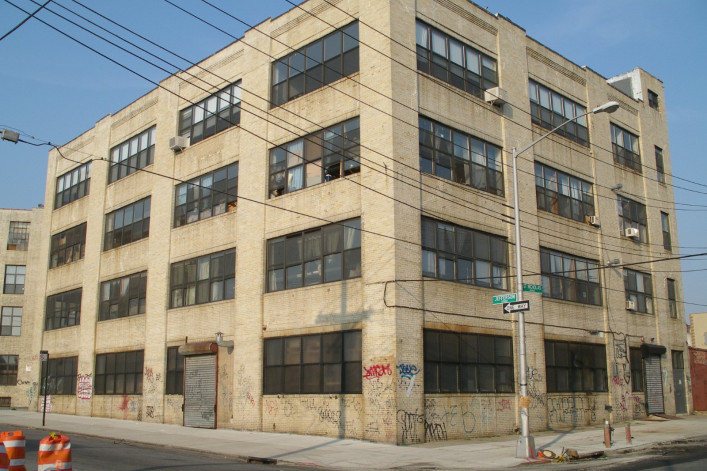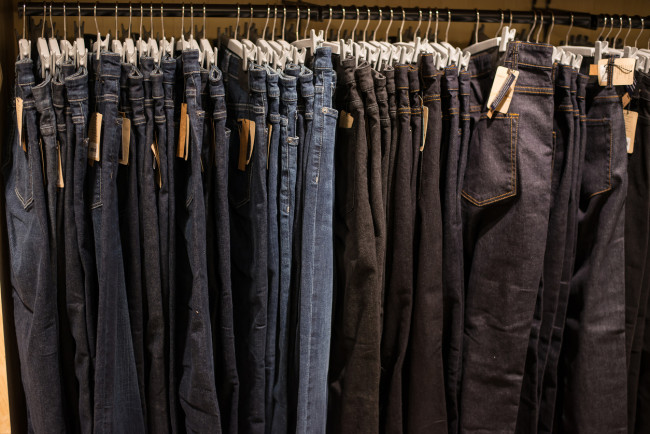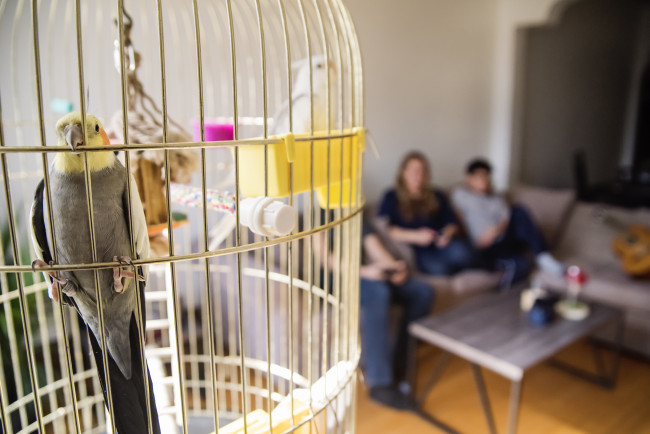I lived next to a junkyard and a chicken factory because of the cheap rent

The apartment was "completely uninsulated because it was essentially a loft in a warehouse building; not much had been done to make it suitable for living except putting in a kitchen and bathroom," a New Yorker named Ruth Shin says.
When Ruth Shin and her husband moved to Brooklyn 20 years ago, their budget was pretty tight. So, when they were shown a huge, spacious loft in East Williamsburg that matched their price, they didn’t give the area much scrutiny. Turns out, they were signing a lease in an industrial neighborhood. They found they could deal with the cars being chopped up outside their window, and sewing machines running downstairs. But one thing really put them over the edge: Chicken juice. Here’s Ruth’s story.
When I was in my 20s in the early 2000s, my husband and I lived in a Manhattan studio apartment that was less than 300 square feet. So, it’s probably not surprising that we decided to move to Brooklyn to get more space for the same rent. We had a monthly budget of $1,000 at the time, which did not give us many options.
I found our East Williamsburg apartment on Craigslist. It was advertised by a really sweet, brand-new real estate agent. We met her somewhere in East Williamsburg and her husband drove all of us to the apartment. I didn’t notice too much about the immediate surroundings because it was after hours. We did notice one strange thing: A conveyor belt along the stairs. We ignored it—we were so excited by the spaciousness of the apartment, which was on the second floor of a two-story building.
The kitchen was humongous, which was a definite selling point since I’m a big cook. We also had a dog and our previous building wasn’t pet friendly, but this one was. The neighborhood seemed desolate, but it was one block from the train and we were willing to commute to get more space. At the time, I was working as an admin at a law firm and my husband was a designer at an ad agency.
[Editor's Note: Brick Underground's series “Living Next to” features first-person accounts of what it’s like to have an iconic or unusual New York City neighbor. Have a story to share? Drop us an email. We respect all requests for anonymity.]
I was born and raised in New York, so I had a pretty high threshold for the zany, and there were definitely some quirks: The apartment was in the shape of a triangle, which made it tricky to figure out a good furniture layout. It was also completely uninsulated because it was essentially a loft in a warehouse building; not much had been done to make it suitable for living except putting in a kitchen and bathroom.
There were four apartments on our floor and we lived above a sweatshop. We would hear the humming of sewing machines every weekday and we could see inside through small holes in our wood floor. You might think that had the biggest impact on our lives, but you would be wrong.
Right next door was a car parts junkyard. We had to be careful with keeping the shades drawn at all times because you could see into our apartment from the junkyard. The workers would sometimes climb the storage structures to grab parts or organize and they would literally be at eye level with us.
They worked Saturdays so we didn’t have much peace on the weekends either. The best part was when they were stripping cars. They’d place the container right against the wall of our building and violently hurl parts into it with an excavator, causing the entire building to shake and quake; it was ear-deafening every time they threw something in there.
But that is not the most problematic part of living there. While sort of irritating, we got used to both the sweatshop and car junkyard pretty fast. We moved into the loft in February, and by spring something else ended up rocking our world.
With summer came an unbearable stench
Enter: The chicken factory. Turns out we also lived right next to a chicken distribution center. Refrigerated tractor trailers would pull in with chilled or frozen chicken and the workers would load them into the warehouse for local delivery. With the warm weather came an unbearable stench and thickened chicken juice with fat suds would pool around our building. By summer we realized that it was an absolutely diabolical situation. The street itself was in such disrepair with potholes along the curb, the chicken juices would stagnate, festering all summer long in the heat. On top of that the sewer grate was perpetually clogged up, so nothing ever drained.
Luckily, we lived on the other side of the building, but we still all had to pass the chicken factory to get to the subway.
We were worried about the unsanitary conditions, so I called the Health Department, only to be told to contact the Department of Environmental Protection. The DEP told me to contact the Health Department. Finally, the DEP sent someone to inspect, but the inspector saw and smelled nothing. They must have gone to a different location. Eventually, an inspector did see the problem. After that the workers started to hose down their stations, but they never hosed down the block and did not ensure that the juices got washed down the gutters. After getting the runaround from the Health Department and DEP, I gave up. Our landlord could not have changed the situation, either. We just prayed for rainy summers.
The stench also attracted dogs. Packs of wild dogs would wander through the area and howl all night. We called ASPCA a lot. We even saw a rooster wandering around once.
Ironically, around that time New York Magazine did a piece on gentrifying neighborhoods along the L train line. The article didn’t quite reach our stop, bt there was a photo with the article that actually showed the street the chicken factory was on and the caption read something like, “No one could possibly live here.”
While the chicken factory created some of the worst memories, we also have some of the best memories from that time, thanks to our neighbors. No one lived directly next to our building or across the street, and as tenants we bonded and became life-long friends. We also threw the best parties. We usually told visitors to avoid Harrison Place and take Flushing Avenue instead because of the stench.
Ready to move after four years
We stayed over four years. Finally, we were ready to move and live in a more normal apartment. We were doing better financially and wanted a place with outdoor space—and no chicken parts.
Probably the biggest impact of living in such bizarre conditions was that it inspired me to get involved in real estate, and ultimately start my own company in order to help other New Yorkers avoid stress and find their own dream homes: PropertyNest.
One of our goals is to match New Yorkers to the home they want, and to help them create the space that they most want by including financial requirements at the beginning of the search. For example, we lived next to the chicken factory based on our budget and need for more space, and because at that time we did not have a way to compare different options. Now I run a company that gives people a better understanding of what’s out there that they can afford.
You Might Also Like



























